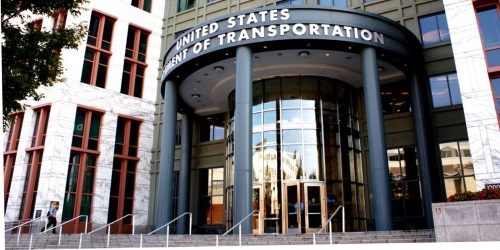A report compiled by the Government Accounting Office finds that the U.S. Department of Transportation’s Infrastructure for Rebuilding America or INFRA grant program “lacks consistency and transparency” and recommends that Congress writ legislation that “ensures the [grant] evaluation process is clearly communicated, that applications are consistently evaluated, and that the rationale for USDOT decisions are clearly documented.”
The 36-page report reviewed the INFRA grant program – which awarded over $1.5 billion for “nationally significant freight and highway projects” for 2017-2018 – and found, among other things, that USDOT only followed up with 42 out of 97 grants applications that were missing key information and “did not sufficiently document” why it only contacted some but not all of those applicants.

“The next reauthorization of surface transportation programs provides Congress the opportunity to build requirements for greater consistency and transparency into USDOT’s grant programs,” GAO said in its report.
[Editor’s note: the GAO made similar critiques of the agency’s Build America Bureau in a separate report issued in March as well as its Transportation Investment Generating Economic Recovery or TIGER grant program – now called the Better Utilizing Investments to Leverage Development or BUILD program – in a report issued five years ago.]
“This is particularly important as USDOT has two additional rounds of INFRA funding to award under the FAST [Fixing America’s Surface Transportation] Act [with] the President’s budget proposal providing an additional $1 billion to INFRA,” it said. “Absent effective action by USDOT going forward, the recurring and long-standing issues GAO has identified could continue to affect DOT’s competitive discretionary grant programs.”
Other recommendations GAO made in its report include:
- The development of procedures for each remaining INFRA-funding cycle to ensure that when additional information is requested from an applicant, the specific rationale behind the request is documented – for example, to promote geographic diversity – along with the rationale used if similar projects are not afforded the same opportunity to provide additional information.
- USDOT should provide information to applicants in its notice of funding opportunity rulemakings for each remaining INFRA-funding cycle regarding how scores on merit criteria are used, if at all, to determine whether projects get selected and how USDOT plans to use merit scores, if at all, to determine which projects should receive an award.
Such grant program complexities are but one reason state departments of transportation believe relying on the traditional formula-funding approach provides a better fiscal pathway for sustaining and expanding the nation’s surface transportation system.

“The heart and soul of the Federal-aid highway program are the formula dollars supporting state and local investment decisions … it allows states and their local partners to fund locally-critical projects that at the same time serve the interests of the nation as a whole,” noted Carlos Braceras, executive director of the Utah Department of Transportation and 2018-2019 president for the American Association of State Highway and Transportation Officials, explained in his testimony during a Senate Environment and Public Works committee hearing on July 10.
“We urge you to focus on maximizing federal formula-based dollars provided directly to states though the existing core formula programs rather than looking at untested new programs and approaches that can divert the federal government’s focus and role in the surface transportation program,” he noted.

“It has provided state DOTs with greater flexibility to deliver projects more efficiently, it better supports data-driven investment decisions, and it allows us to target federal funds to those projects and programs that achieve the greatest return on investment,” Braceras added.
In the end, he emphasized that the formula-based program framework built the Interstate Highway System and the National Highway System, which serves “as the backbone” of the nation’s network of roads and bridges.
“This remains the optimal approach to underpin the next surface transportation legislation that will serve all corners of our country – by improving mobility and quality of life in urban, suburban, and rural areas,” he said.



